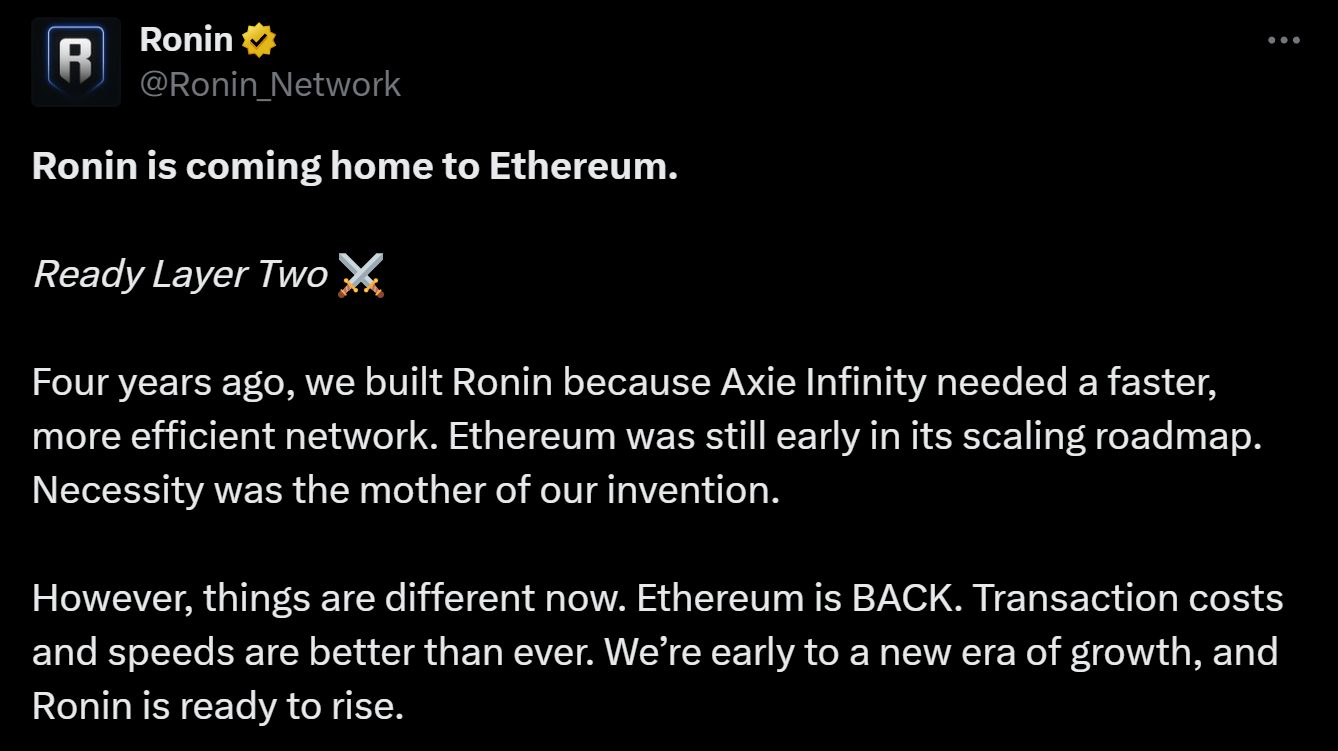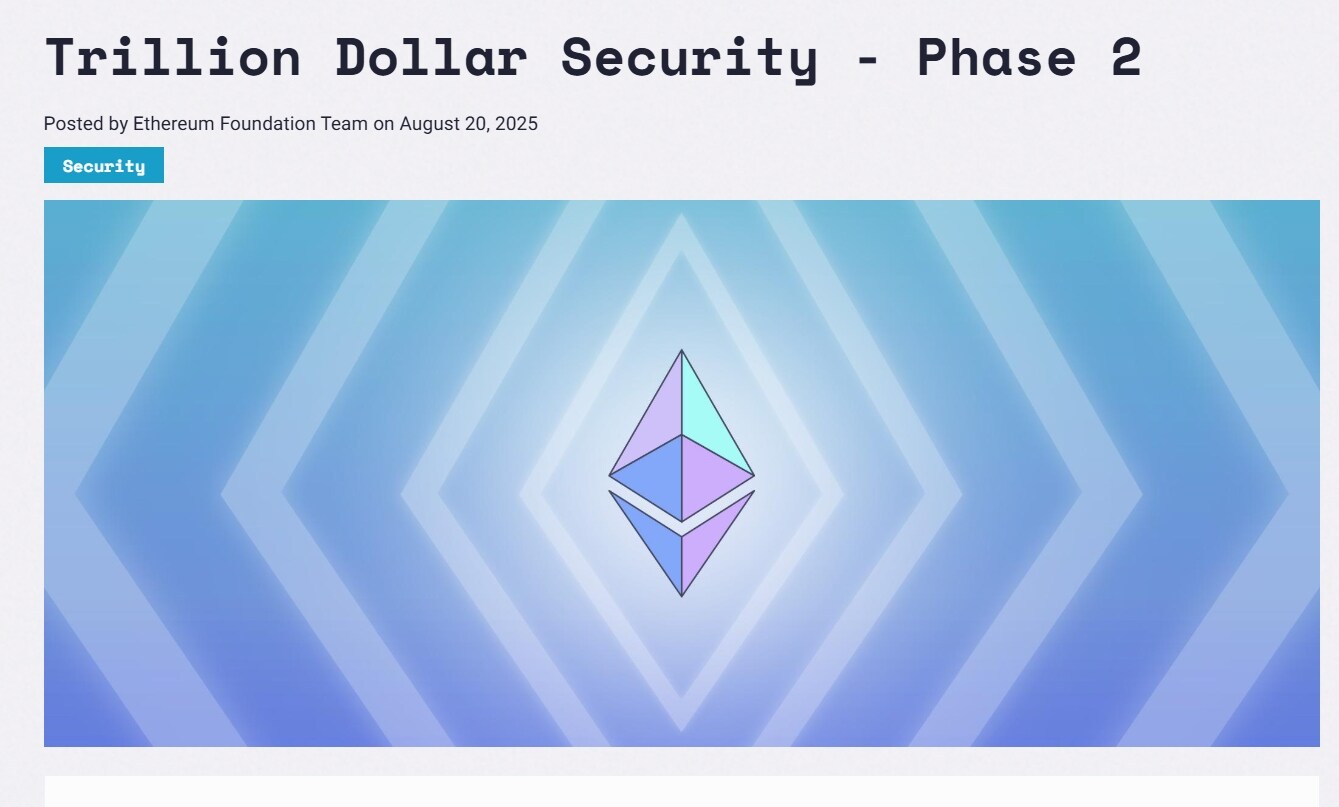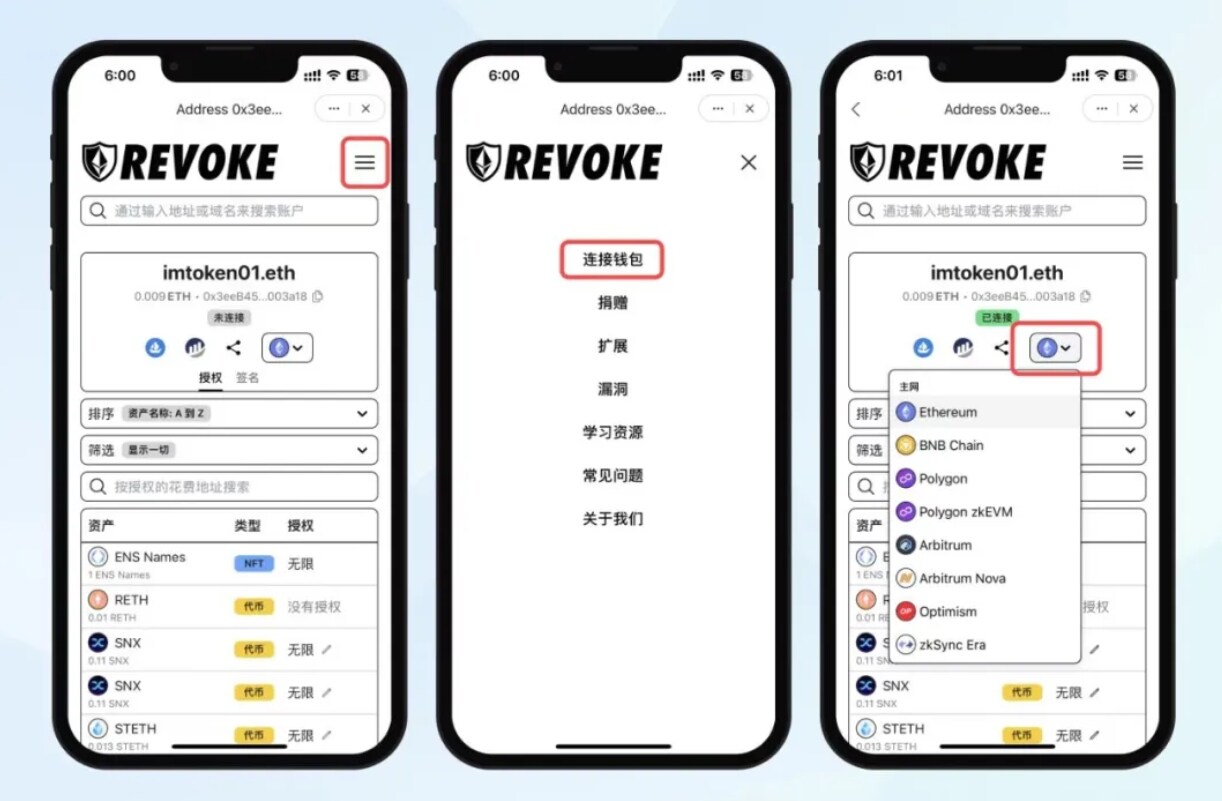"Ronin is coming home to Ethereum."
On August 15, the Ronin sidechain, which had been expanding its DeFi business and consumer DApps for months, suddenly announced its "return home," planning to transition from an Ethereum sidechain to an L2 solution.
At the same time, the Ethereum Foundation is also promoting another milestone event—the "Trillion Dollar Security Plan" (1 TS) has officially entered its second phase, shifting its focus from underlying consensus and security mechanisms to wallet user experience and application layer usability.

As the saying goes, "The duck knows the spring water is warm," the next wave in the Ethereum ecosystem, a dual upgrade in security and experience, is being realized.
1. 1 TS Phase Two: A Leap from Security to Experience
As early as May this year, the Ethereum Foundation (EF) released the blueprint for the "Trillion Dollar Security Plan" (1 TS), aiming to make Ethereum the ultimate settlement layer capable of supporting billions of users and trillions of dollars in economic activity.
Subsequently, the EF adjusted its internal governance structure and released the first report on 1 TS in June, summarizing the main security issues currently facing Ethereum into six categories—User Experience (UX), Smart Contract Security, Infrastructure and Cloud Security, Consensus Protocol Security, Security Incident Response and Mitigation Mechanisms, Social Layer and Governance Security, marking the beginning of a systematic approach to addressing ecological security challenges (see further reading: "Is User Experience Also a Security Issue? Understanding the UX Challenges in Ethereum's Trillion-Level Security Blueprint").
On August 20, the Ethereum Foundation published another article, officially announcing the launch of the second phase of the 1 TS plan, clearly stating that the core goal has shifted from underlying security to user experience and wallet security, with action points including:
- Collaborating with Walletbeat to establish minimum security standards for Ethereum wallets, including requirements for transparent transactions and anti-intrusion interfaces;
- Addressing blind signing issues through support for projects like Verifier Alliance (VERA) to enhance transaction decoding capabilities;
- Establishing an open-source smart contract vulnerability database to help developers detect code vulnerabilities before deployment;

Additionally, the EF encourages the community to develop "minimalist wallets" aimed at non-technical users, as well as enterprise-level solutions that meet compliance and privacy needs, further lowering the barriers to using Ethereum.
In other words, 1 TS has moved from blueprint to practice; Ethereum not only aims to continue being the safest infrastructure but also to become the most user-friendly and trustworthy public base, achieving a siphoning effect. After all, wherever higher security standards and smoother user experiences can be provided, funds, users, and developers will concentrate there.
2. Security and Experience: Building a New Moat
"If users cannot understand the transactions they are signing and cannot properly manage their keys, then no matter how secure the underlying Ethereum is, the user's experience remains dangerous." This reveals the fundamental goal of the second phase of 1 TS: to transform the interaction between wallets and applications from a security challenge into a "safety barrier."
Ronin's "return home" is a typical signal; it once chose to leave due to high gas fees and complex interactions, creating an independent public chain. However, with the maturity of Rollup technology and the dual upgrades in Ethereum's security and experience, Ronin realized that rejoining the Ethereum ecosystem is more valuable:
Returning to Ethereum means immediate access to mature liquidity, unified standards, enjoying the richest development tools and standards, and obtaining the most solid security endorsement, thereby reducing costs and enhancing experience.
Rather than struggling independently, it is better to reconnect with Ethereum's vast ecosystem.
From this perspective, if the first phase of Ethereum won the trust of core applications like DeFi, stablecoins, and NFTs through "security," then in the second phase, it truly demonstrates the siphoning effect on user experience and ecological prosperity.
All of this is precisely the strategic intent of "1 TS Phase Two"—solutions for blind signing in wallets, the introduction of minimum security standards, and the establishment of a vulnerability database are not just security measures but also experience upgrades. Together, they will lower the user entry barrier, allowing Ethereum to transition from "only geeks and crypto-native users can use it" to "anyone/institution globally can use it with confidence."
Ronin is not the first, nor will it be the last; today marks the return of gaming public chains, and tomorrow may see more public chains that once chose "independent development" returning to Ethereum to transform into L2s. Ultimately, Ethereum's position as a settlement layer will become increasingly solidified, and the scale of its ecosystem will be further expanded.
After security, experience becomes the new moat. Once Ethereum completes the construction of this moat, it will not only be the first choice for developers but will also become the default entry point for global users.
3. Wallets: The First Line of Defense for Trillion-Dollar Applications
If Ethereum's 1 TS is a systematic upgrade project, then wallets are the first cornerstone of this project. Therefore, the EF clearly supports developers and contributors in establishing minimum security standards for wallets:
Promoting transaction readability and simulation to completely solve the blind signing problem, while also establishing a vulnerability database and development tools to help wallets and DApps identify issues before going live. This series of actions is essentially building a "barrier" for wallets, making them not just an entry point but also a trusted guardian of user asset security and experience.
From the user's perspective, future wallets will no longer be "complex cryptographic tools," but will gradually evolve into "default secure on-chain financial assistants." From the developer's perspective, the standardization and security of wallets also mean that ecological applications can reach users more quickly and with lower risk.
For current wallet service providers, this is both a challenge and an opportunity. Take imToken as an example; the continuous iteration around transaction readability, authorization management centers, and risk identification mechanisms aligns with the direction proposed by the EF:
- For common contract call requests, signature requests have been made readable, clearly displaying authorization objects, amounts, and whether it is unlimited authorization, helping users identify the actual operation content and significantly reducing the risk of users mistakenly signing due to lack of understanding;
- The authorization management page inherits the revoke function, allowing users to quickly view and manage all DApp authorization history, supporting one-click revocation;
- It integrates an on-chain address blacklist system, DApp risk scoring mechanism, and third-party security services, enabling early identification of risks such as malicious links, disguised front ends, and phishing contracts;

Wallets are not just entry points; they are the first line of defense for whether Ethereum can support trillion-dollar applications in the future. The first to align with standards, establish barriers, and systematically respond will be the true beneficiaries in the "return migration wave."
Today's Ethereum is no longer just "the world's largest smart contract platform"; it is gradually upgrading to become the settlement layer and infrastructure for global trillion-dollar applications.
It is foreseeable that in the coming years, Ethereum will not only continue to dominate the crypto financial world but will also gradually integrate into broader real-world finance and everyday application scenarios, from cross-border payments to corporate treasury management, from gaming and entertainment to social networks.
As witnesses, we will directly witness trillion-dollar-level innovations and applications being redefined on Ethereum.
免责声明:本文章仅代表作者个人观点,不代表本平台的立场和观点。本文章仅供信息分享,不构成对任何人的任何投资建议。用户与作者之间的任何争议,与本平台无关。如网页中刊载的文章或图片涉及侵权,请提供相关的权利证明和身份证明发送邮件到support@aicoin.com,本平台相关工作人员将会进行核查。



